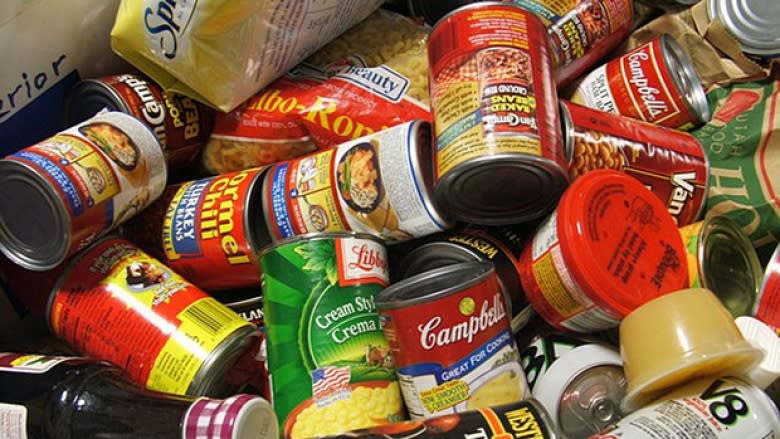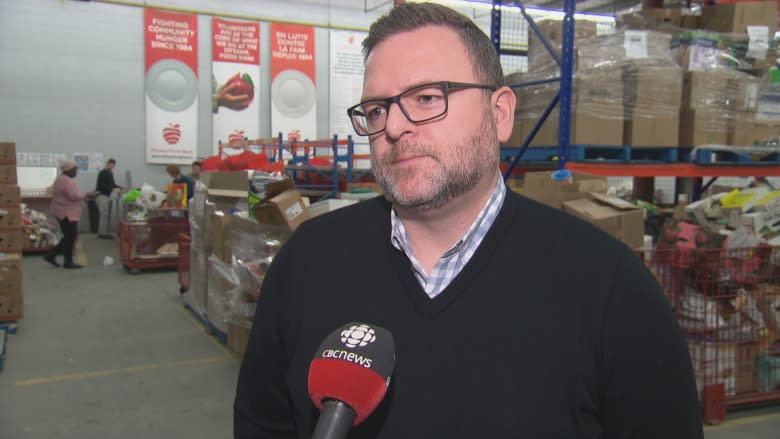Costly housing, groceries blamed for jump in food bank use
The rising cost of groceries and housing are behind a spike in the number of people using food banks across Ottawa this year, according to a new report.
The Ottawa Food Bank's report, released Monday, details a dramatic 5.6 per cent hike in the number of people using food banks across the city since 2016. That means nearly 20,000 people in Ottawa relied on the city's 28 community food banks in 2017, an increase of more than 1,000 individuals over 2016.
A lack of affordable housing and rising food costs are to blame, according to the report.
"These are the costs that are really behind what's been driving people to use a food bank," said Michael Maidment, executive director of the Ottawa Food Bank.
According to Ontario's Ministry of Housing, the average monthly cost of a one-bedroom apartment in Ottawa in 2016 was $982, the highest rental rate outside the Greater Toronto Area.
"One of the main issues that we're pointing to as a solution here is around affordable housing because the community doesn't have enough affordable housing. Rents are high, the cost to own a home is high and there are 10,000 households on a wait [list] for affordable housing in the City of Ottawa."
Families spend an average of five years on the wait list before accessing affordable housing, he said.
More single people using food banks
Food costs have also spiraled, increasing 18.6 per cent since 2009, Maidment said.
Since it can be more difficult to control the cost of food, he said he's hoping the city can do more to provide affordable housing, and is looking forward to the implementation of the federal government's national housing strategy.
More single people are also using food banks because more than half of them are living below the poverty line, said Maidment. However anyone can be a food bank client, he stressed.
"If you were doing your Christmas shopping and stood and looked in a circle around you, those are the people who are using a food bank."
Maidment said that while food banks in Ottawa are busy year-round, usage often spikes after the Christmas holidays, in February, March and April, because heating costs rise and people struggle to outfit children in warm clothes and snow suits.
Correction : A previous version of this story based on information from the executive director of the Ottawa Food Bank stated 8,700 more families used Ottawa food banks in 2017 than in 2016. In fact, the 5.6 per cent increase represents slightly more than 1,000 individuals. (Dec 11, 2017 5:19 PM)



